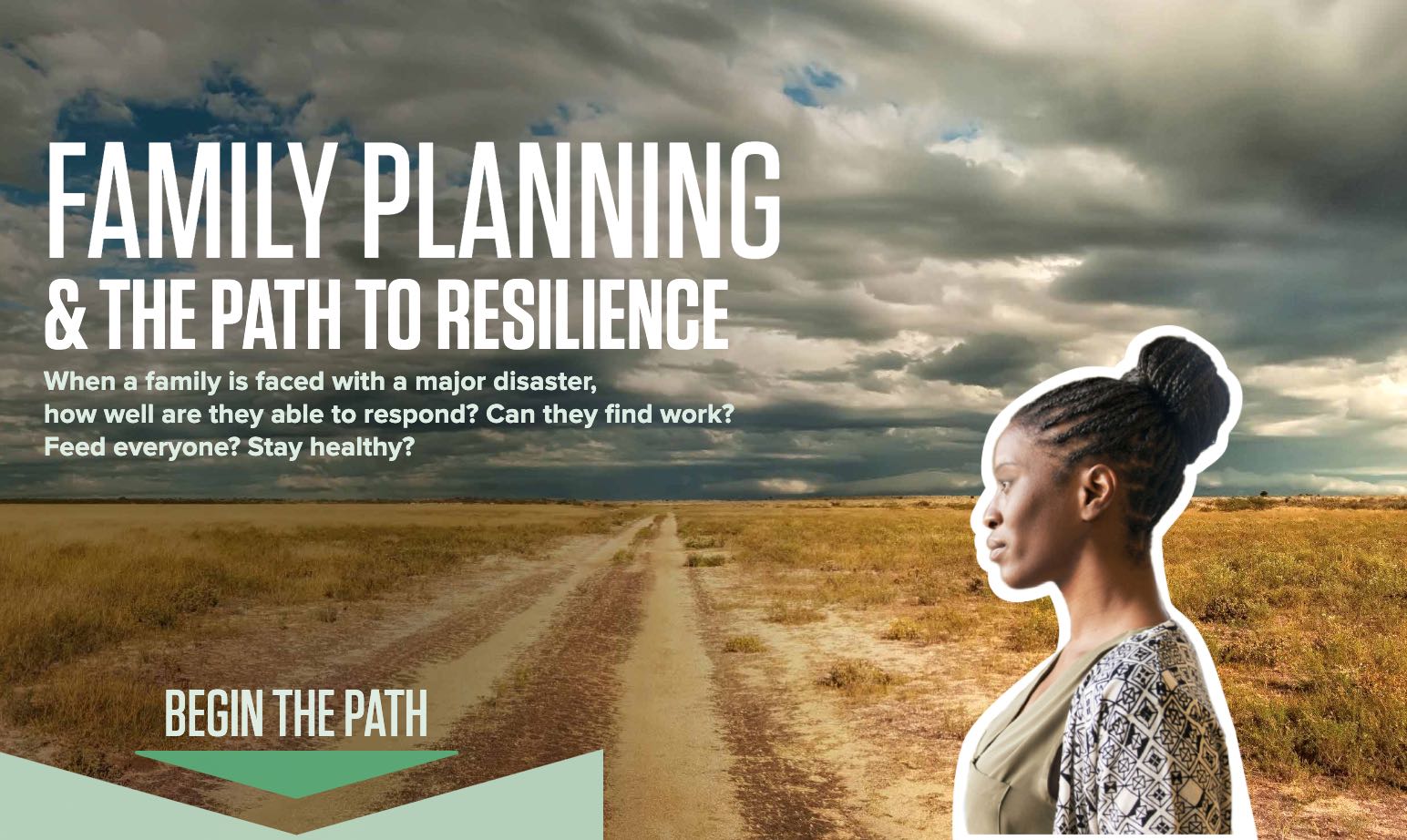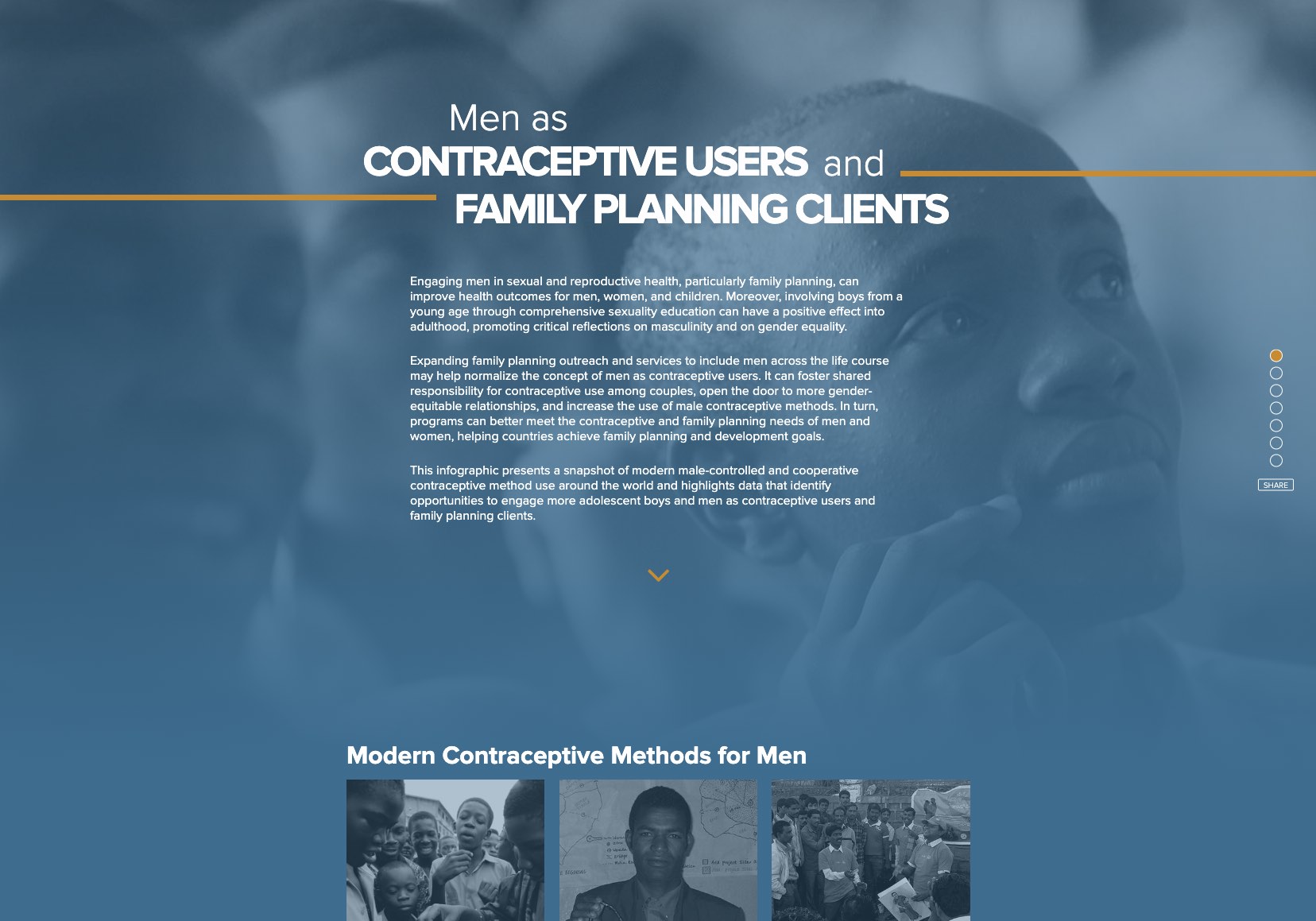
Harnessing the Demographic Dividend
Harnessing the Demographic Dividend
Several ENGAGE products focus on economic development, especially the potential benefits of a demographic dividend. This segment from the ENGAGE presentation “Harnessing the Demographic Dividend” explains the changes necessary for countries to achieve a demographic dividend, and serves as a platform for leaders to discuss investments in youth, family planning, education, and the economy. Partners and others have used this presentation on multiple occasions to open dialogue on population and development issues in sub-Saharan Africa, including at a United Nations meeting of heads of state from the Sahel region and a high-level ministerial meeting in Ethiopia.
Family Planning and the Path to Resilience
In many developing countries, extreme weather events tied to climate change are increasingly threatening people’s property, livelihoods, and lives. Policymakers seek strategies to help people build resilience to these environmental shocks, which can exacerbate crises caused by poverty and poor health. This interactive infographic, shared via the web and social media, explains the concept of resilience in simple terms, highlighting the policy interventions that help families become more resilient to a crisis. Framing resilience as the integration of health and nutrition, education, and economic stability, the infographic outlines clear policy changes that decisionmakers across sectors can implement.
Men as Contraceptive Users and Family Planning Clients
Engaging men in sexual and reproductive health, particularly family planning, can improve health outcomes for men, women, and children. Expanding family planning outreach and services to include men can foster shared responsibility for contraceptive use among couples, open the door to more gender-equitable relationships, and increase the use of male contraceptive methods. This infographic, widely shared through a targeted social media campaign, presents a global snapshot of modern male-controlled and cooperative contraceptive method use and highlights data that identify opportunities to engage more adolescent boys and men as contraceptive users and family planning clients.
Improving Nutrition and Food Security Through Family Planning
PRB’s global ENGAGE multimedia products have been viewed by thousands of policymakers in global, national, and local gatherings, including six heads of state. This segment from an ENGAGE presentation raises awareness about how family planning can help improve key measures of nutrition for mothers, infants, and children, as well as improve food security more broadly. The presentation explains how current and projected population growth will constrain the availability of agricultural land, especially as plots are further divided among successive generations.
Fostering Economic Growth, Equity, and Resilience in Sub-Saharan Africa: The Role of Family Planning
Advocates and leaders need evidence that reaches beyond the health sector to effectively make the case for family planning investments. To meet this ongoing need, PACE’s recent comprehensive report summarizes the latest evidence on how family planning contributes to economic growth, including competitiveness, as well as equity and resilience in sub-Saharan Africa (SSA). Today, many countries in SSA have made impressive gains in expanding the reach of their family planning programs. Innovative planning and advocacy tools are raising the visibility of family planning, helping policymakers and leaders recognize the multiple cross-sectoral benefits of family planning. This report explores those benefits—revealing how family planning could significantly affect SSA’s development in three key ways: strengthening economic growth and global competitiveness; advancing inclusive and equitable growth; and building resilience for families, communities, and nations. It expands current thinking by presenting both direct and plausible impacts of family planning on labor market productivity, as well as labor market efficiency, national infrastructure, and institutions.
Reaching New PHE Champions Globally
As part of efforts to share cross-cutting information and increase dialogue and visibility of multisectoral approaches, PACE updated and revised the Population, Health, and the Environment (PHE) course for USAID’s Global Health e-Learning Center. The course is designed to engage the learner through vivid examples and case studies that connect the content to PHE projects from around the world. The revised course will help development practitioners, policy advocates, and others interested in integrated approaches to development understand how and why the PHE approach is an efficient and effective way for countries to achieve the SDGs, and a means of increasing equity for family planning and health services in remote communities.

 ">
">
 ">
">